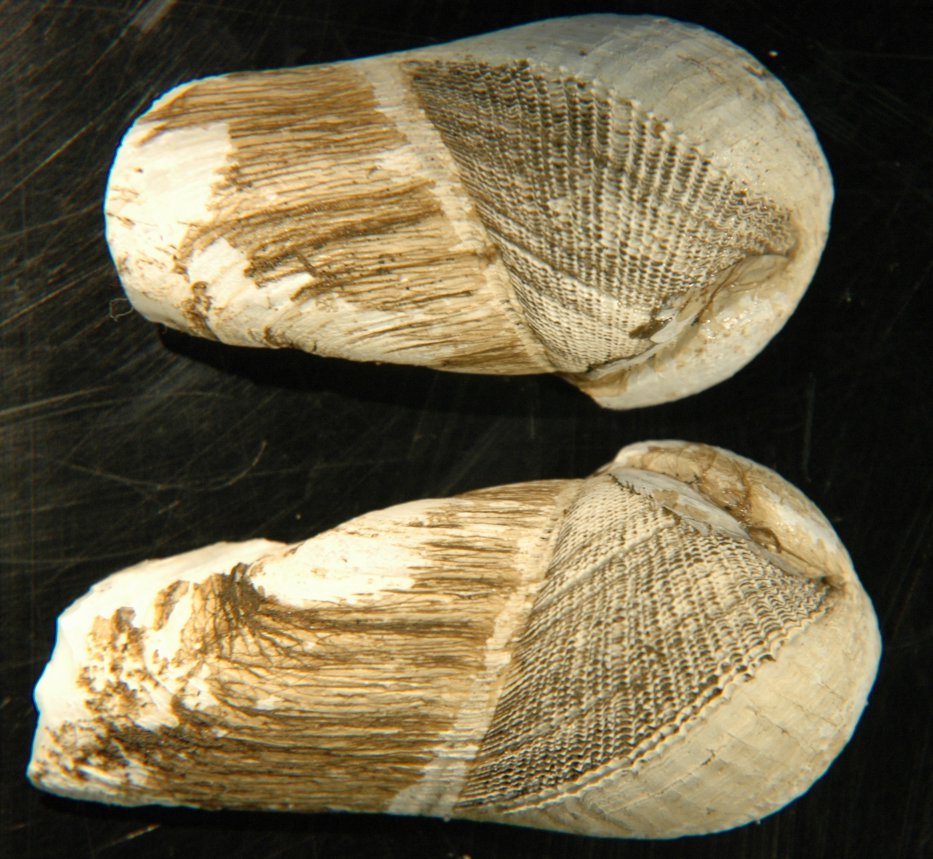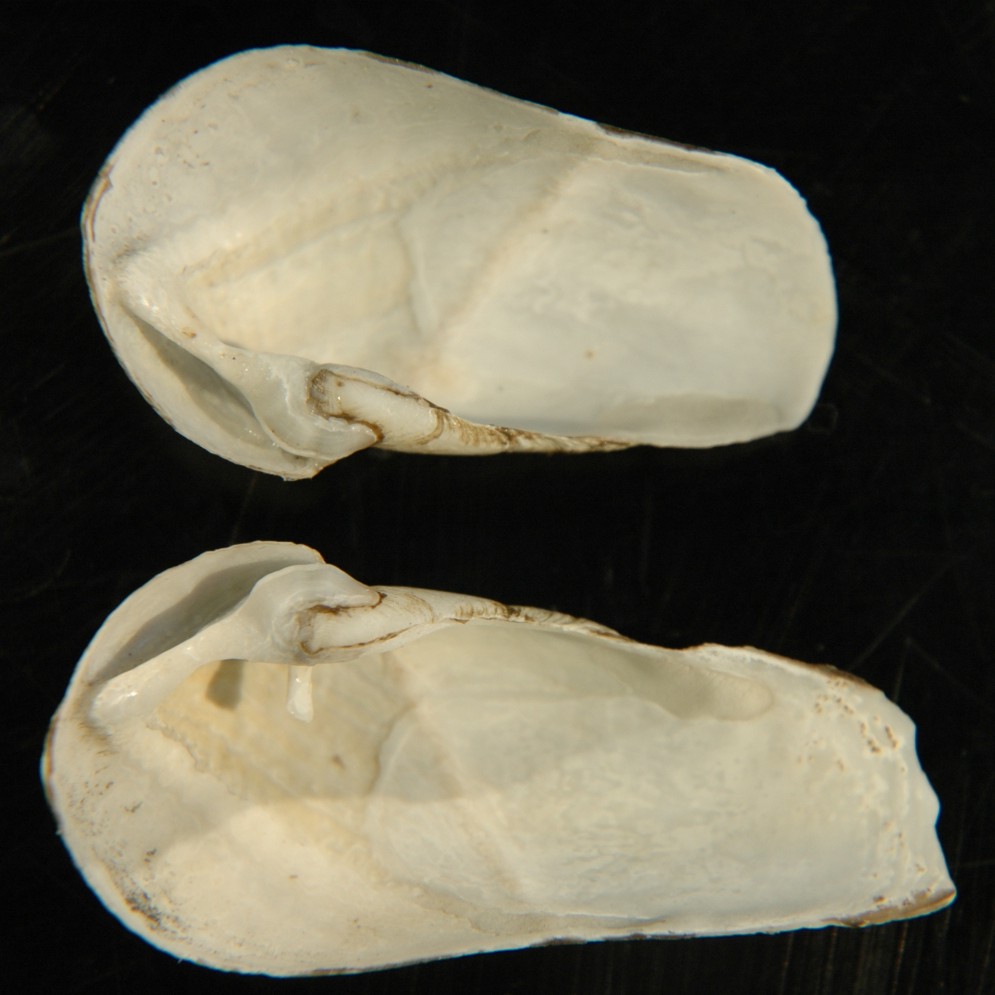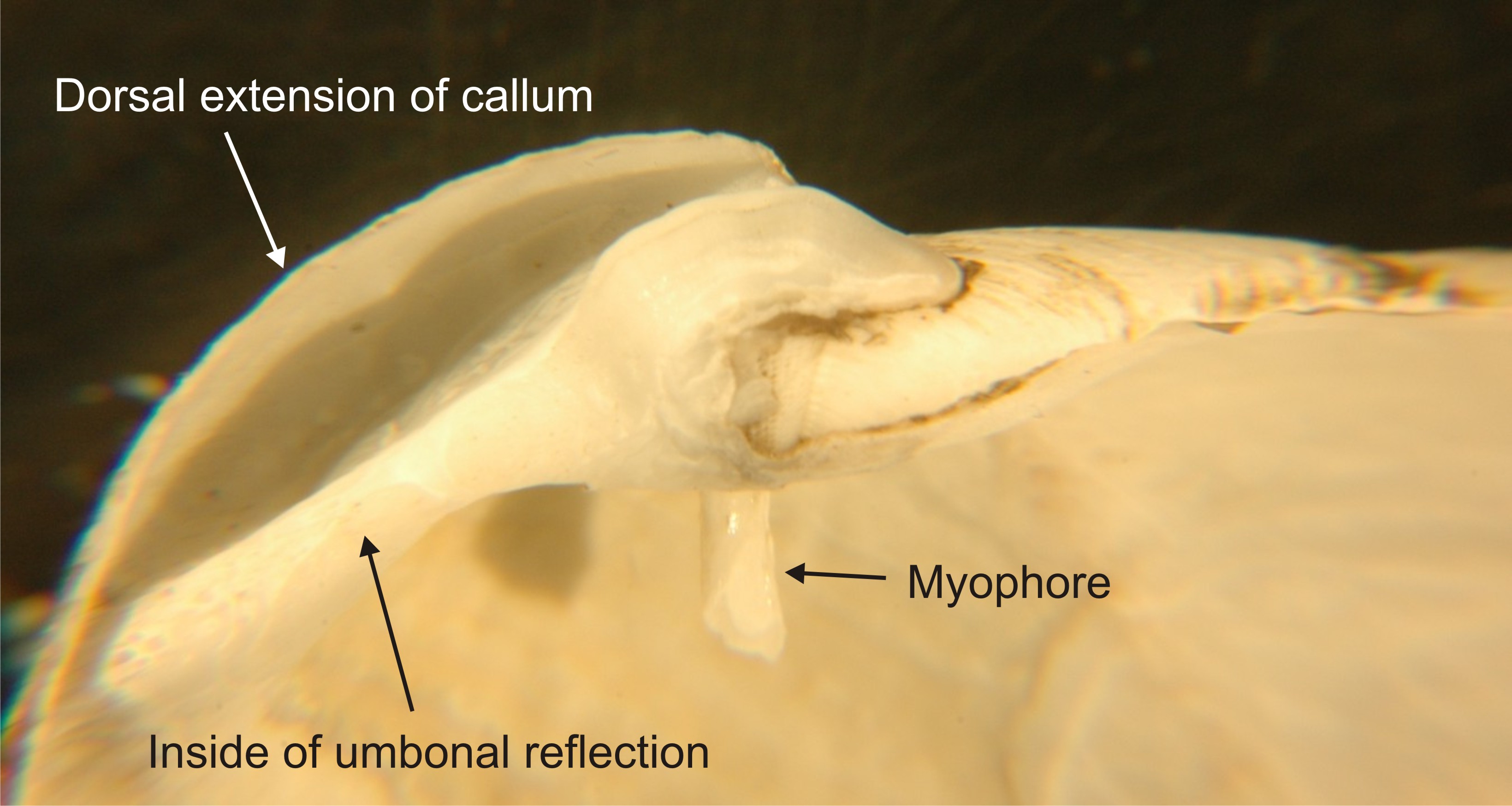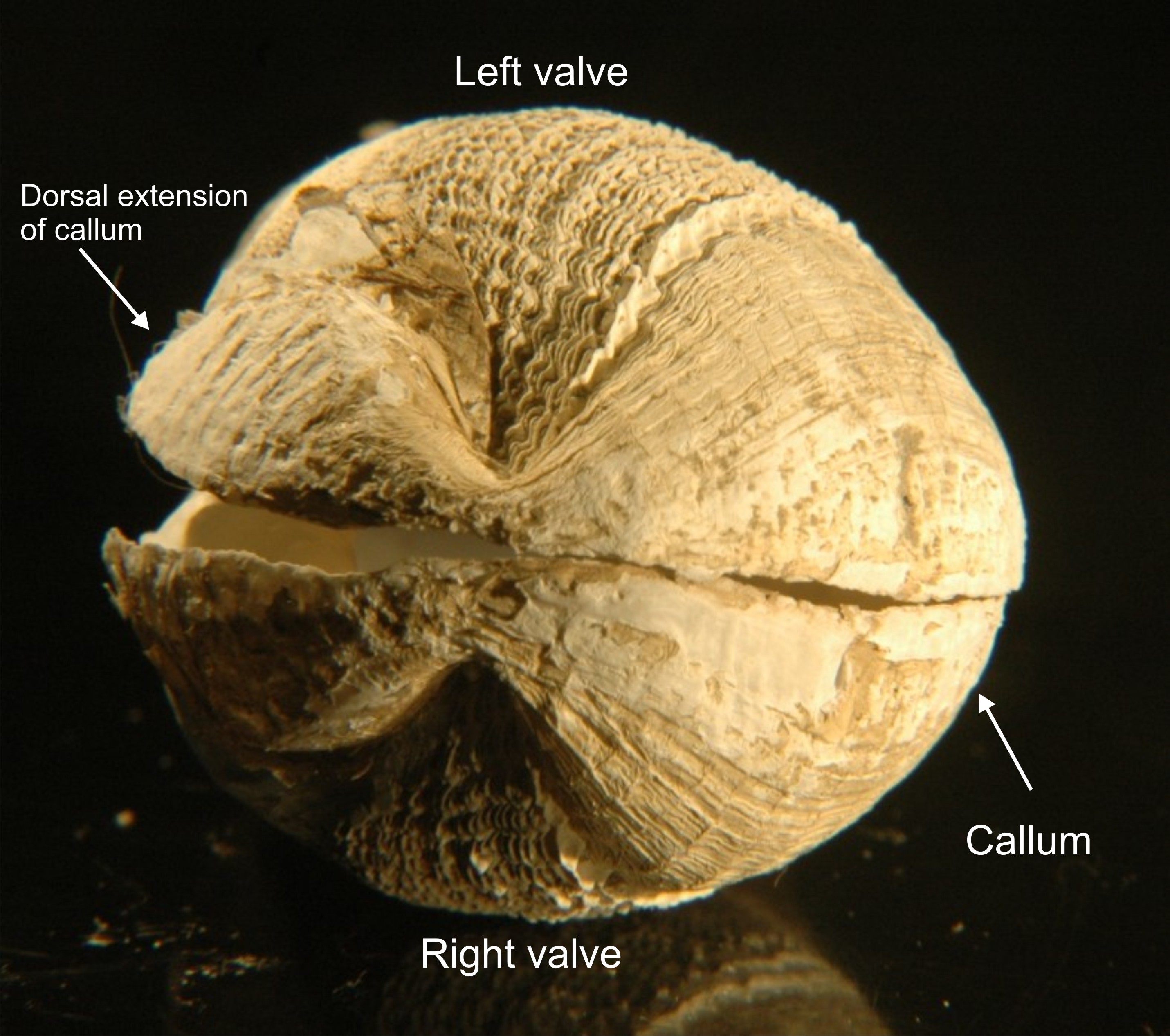Penitella turnerae Evans and Fisher, 1966Common name(s): Piddock clam |
|
| Synonyms: |  |
| Phylum Mollusca
Class Bivalvia Subclass Heterodonta Order Myoida Suborder Pholadina Family Pholadidae |
|
| Penitella turnerae found in shale near Lincoln City, OR by Bob Mead. Longest shell is 5.5 cm long and 2.6 cm wide. Right valve is above, left valve is below. Anterior end is to the right. | |
| (Photo by: Dave Cowles, May 2006) | |
Note: I found no evidence of a siphonoplax on this individual. If it did indeed have a siphonoplax it would key to Penitella penita, a more commonly encountered species.
How to Distinguish from Similar Species:Penitella richardsoni has umbonal reflections free from the anterior rasping part of the shell for about half the length of the reflection. Penitella conradi and Penitella penita have a siphonoplax. Zirfaea pilsbryi has an anterior rasping portion about half the length of the valve, plus its anterior gape does not close. Netastoma rostrata has no myophores. The anterior portion of Barnea subtruncata is not clearly set off from the posterior portion by a groove. Parapholas californica lives farther south, its valves are clearly divided into three sections, and it has distinctive overlapping plates of periostracum on the posterior end.
Geographical Range:
Depth Range:
Habitat:
Biology/Natural History:
| Return to: | |||
| Main Page | Alphabetic Index | Systematic Index | Glossary |
References:
Dichotomous Keys:Kozloff 1987, 1996
General References:
Scientific Articles:
Web sites:
General Notes and Observations: Locations, abundances, unusual behaviors:

An inside view of the same individual as above. The upper
(left)
valve has been broken off somewhat at the posterior end.
 |
 |
| In this closeup view of the hinge of the right valve, the dorsal extension of the callum, hinge, inside of the umbonal reflection, and the myophore can be clearly seen. | |
Authors and Editors of Page:
Dave Cowles (2006): Created original page


